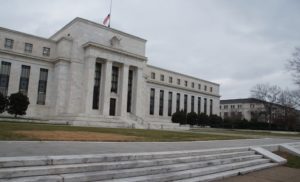High valuations have also created a gap between buyer and seller expectations on pricing.

Valuation pressures continue to be elevated across a range of asset classes, including equities and commercial real estate. Over the second half of 2017, valuation pressures edged up from already elevated levels. In general, valuations are higher than would be expected based solely on the current level of longer-term Treasury yields.
This has been a theme that has appeared regularly in Fed speeches, reports and interviews. Shortly before she left, former Fed Chair Janet Yellen told CBS that US stocks and commercial real estate prices are elevated. Commercial real estate prices are currently “quite high relative to rents. Now, is that a bubble or is it too high? And there it’s very hard to tell. But it is a source of some concern that asset valuations are so high,” she said.
The Monetary Policy report follows last week’s release of the Federal Reserve’s minutes from its January meeting. Language from the minutes suggested the Fed would not be adverse to raising rates more than the expected three times this year. When it does valuations will likely reconfigure.
A Buyer-Seller Disconnect
It is also important to note that the Fed has signaled that the rate increases — however many there are — will happen gradually, which likely means that any influence on valuations will be subtle. In the meantime there are many effects that an inflated valuation of real estate assets can have on the market and the immediate impact has been a disconnect between buyers and sellers on pricing — a disconnect that has been underway for some time.
Essentially buyers and sellers are at loggerheads about pricing, Green Street Advisor analyst Joi Mar told GlobeSt.com in an earlier interview.
“Investors are weighing record prices, slowing property fundamentals and Fed tightening,” she says. And of course, there are also structural changes underway in some asset classes such as retail, she adds.
What will likely happen, she predicts, is that sellers will move toward the bid price. That is what usually happens — instead of the other way around — since buyers aren’t pressured to transact, while sellers may need to exit.
“Performance Depends On Property Type”
Meanwhile, the Green Street Commercial Property Price Index remained essentially unchanged in January. The index, which measures values across five major property sectors, has declined by 1% over the past year.
“Commercial property values have, for the most part, been steady, but performance depends on the type of property,” said Peter Rothemund, Senior Analyst at Green Street Advisors, in a prepared statement. “Industrial pricing continues to set new highs, while strip retail values have recently moved lower. Other property types are little changed of late.”
By: Erika Morphy (Globe St)
Click here to view source article.


